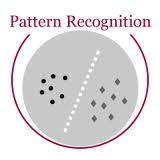Phase retrieval (PR), a long-established challenge for recovering a complex-valued signal from its Fourier intensity-only measurements, has attracted considerable attention due to its widespread applications in digital imaging. Recently, deep learning-based approaches were developed that achieved some success in single-shot PR. These approaches require a single Fourier intensity measurement without the need to impose any additional constraints on the measured data. Nevertheless, vanilla deep neural networks (DNN) do not give good performance due to the substantial disparity between the input and output domains of the PR problems. Physics-informed approaches try to incorporate the Fourier intensity measurements into an iterative approach to increase the reconstruction accuracy. It, however, requires a lengthy computation process, and the accuracy still cannot be guaranteed. Besides, many of these approaches work on simulation data that ignore some common problems such as saturation and quantization errors in practical optical PR systems. In this paper, a novel physics-driven multi-scale DNN structure dubbed PPRNet is proposed. Similar to other deep learning-based PR methods, PPRNet requires only a single Fourier intensity measurement. It is physics-driven that the network is guided to follow the Fourier intensity measurement at different scales to enhance the reconstruction accuracy. PPRNet has a feedforward structure and can be end-to-end trained. Thus, it is much faster and more accurate than the traditional physics-driven PR approaches. Extensive simulations and experiments on a practical optical platform were conducted. The results demonstrate the superiority and practicality of the proposed PPRNet over the traditional learning-based PR methods.
翻译:阶段检索(PR)是一个长期存在的挑战,它要求从Freyer的密集度测量中恢复一个具有复杂价值的信号,但因其在数字成像中的广泛应用而引起了相当大的关注。最近,开发了深层次的基于学习的方法,在单发PR中取得了一些成功。这些方法要求单发PR系统采用单一的Fourier强度测量,而无需对测量的数据施加任何额外的限制。然而,香气深层神经网络(DNNN)并没有带来良好的业绩,因为其投入和产出领域在PR问题的输入和产出领域之间存在巨大差异。物理知情的方法试图将Fourier强度测量纳入一个迭代方法,以提高重建的准确性。然而,它需要一种长期的计算过程,而准确性仍然无法保证准确性。此外,许多这些方法对于模拟数据的工作,忽略了一些共同的问题,例如实际光学PRP系统中的饱和量化错误。在本文件中,提出了一个新的由物理学驱动的多层次结构。PPRNet与其他基于深层次的PR方法一样,它只要求一种单一的密集度测量方法。它以物理学驱动为核心的网络,它遵循一种经过培训的PPR的精确度的精确度测量方法,因此,在更精确的PRRR的深度测量结构上可以进行更精确的精确度测量。在不同的进行。




